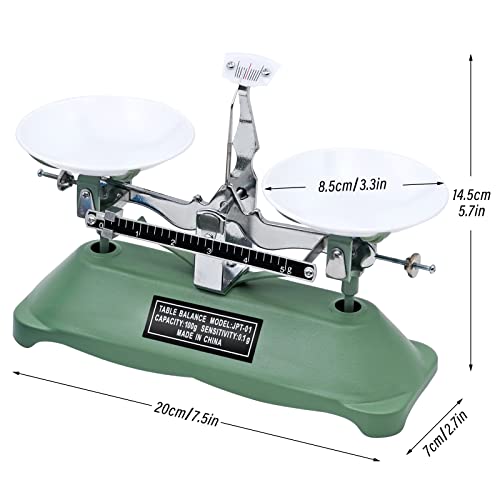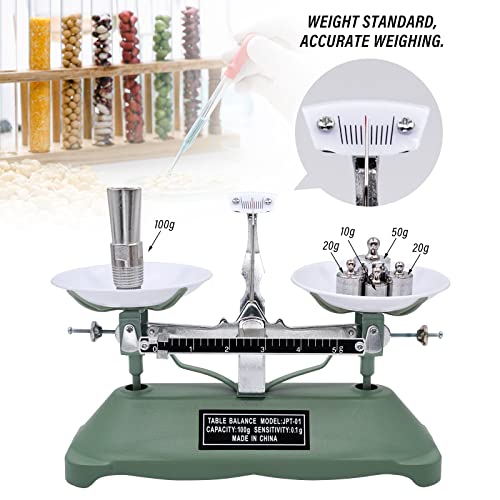All Categories








NAOEDEAH 100g Balance Scale for Lab Scale Mechanical Double Balance Scale with Weights Pan Balance Scale for Analytical Balance Laboratory Scale for Science Experiments School Lab Supplies Tool
Share Tweet








NAOEDEAH 100g Balance Scale for Lab Scale Features
-
【HIGH CALIBRATION ACCURACY】: The balance is equipped with 5g weights, 10g weights, 20g weights,50g weights and100g weights .The measurement accuracy is 0.1g and the measurement range is 0.1-100
-
【PRODUCT SIZE】: The lab mechanical balance scale is 7.9 x 2.9 x 5.7 inch, it is easy to operate and carry;can measure items weight without using a power source
-
【WIDELY USED】:Balance scale with weights suitable for science lab and classroom,prefect for learn the Physics balance principle and how to use it,also can be used as a Jewelry scale, Lab scale analytical balance, Carat scale to weigh small parts, gemstones accurately etc
-
【BEFORE USE】: Before using the laboratory balance scale make sure it is placed on a horizontal table and cannot be tilted; make sure that there is no residual liquid and powder in the trays at both ends of the balance; adjust the balance nut so that the balance pointer points to the middle
-
【INSTRUCTIONS】: Put the object to be loaded on the left side of the balance, add weights to the right one by one or adjust the scale of the rider. After the left and right balances, remove the weights. The number marked on the weight plus the rider indicator is the measured object Actual weight
About NAOEDEAH 100g Balance Scale For Lab Scale
Package size:8.2 x 6.1 x 3.5 inch Weight: 1.2lb Package includes: 1 x Tray Balance 1 x Tweezers 1 x Weight 5g 1 x Weight 10g 2 x Weight 20g 1 x Weight 50g Instructions: 1.When using the balance, it should be placed on the flat workbench 2.Move the rider to the “0” point on the left end of the ruler: the pointer should be aligned with the center line of the header to obtain balance. Otherwise, the balance nut on the lever should be turned to adjust the balance 3.After the balance is adjusted, place the object to be weighed in the left tray, use tweezers to add weight from large to small in the right tray, try to put the item and weight in the center of the tray, when the weight is increased or decreased to the minimum mass, the weight is still unbalanced, the rider can be balanced.The mass of the object is equal to the sum of the mass of the weight and the mass of the rider 4.After weighing, the rider should be returned to zero scale and the weight should be put back into the box





















